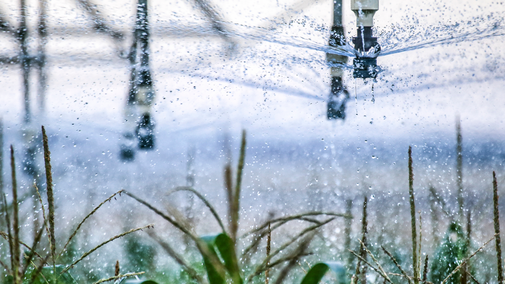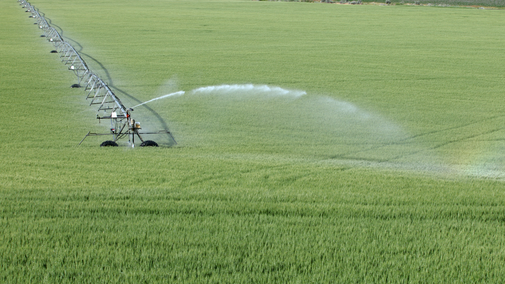
Water management information is housed on the Nebraska Extension website UNL Water. Sub-sections include:
- Water Sources — including groundwater, stormwater, watersheds, nitrates, lakes, ponds and streams
- Animal Manure Management
- Residential Water Use — including water wells, wastewater and water health
Irrigation Management in Crop Production
With rising fuel prices and efforts to more efficiently utilize water for crop production, UNL Extension is working hard to help producers more effectively and efficiently use water resources while maintaining high crop yields.
Agricultural water users can optimize water use efficiency and protect the quality of water resources by applying basic information about irrigation systems, crop water use and management practices. For optimum water use efficiency and profitability, producers need to monitor rainfall, soil moisture and crop water uses and utilize cropping systems like no-till or reduced tillage to capture and retain as much precipitation as possible.
See these UNL Extension resources for more information on water and irrigation management for all major crops grown in Nebraska.
Deficit Irrigation Information
Information on deficit irrigation and how to use the Water Optimizer tool developed by UNL.
Plant Growth and Yield as Affected by Wet Soil Conditions Due to Flooding or Over-Irrigation
This NebGuide discusses how wet soil conditions caused by flooding or over-irrigation can damage crops, reduce yields, and contribute to groundwater contamination. Adopting proper irrigation management strategies can limit negative impacts.
Predicting the Last Irrigation of the Season
This NebGuide presents criteria and "rules of thumb" for predicting the last irrigation of the season for corn, grain sorghum, soybeans and dry beans. Average net irrigation needs across the state of Nebraska vary from six inches or less in eastern Nebraska to 14 inches in western Nebraska. Estimated corn, grain sorghum, soybeans and dry bean water needs for each stage of growth can be seen in Table I. Daily water use estimates can vary greatly across the state, and from year to year, making average water use rates just that estimates.
- How Extended High Heat Disrupts Corn Pollination
- Irrigating with Limited Capacity Wells or Water Allocations
- Tips for Irrigating in Extreme Hot, Dry Conditions
- Maximizing Pivot Efficiency
- Scheduling the Last Irrigation
- Weekly Irrigation Newsletter: Using Soil Water Tension Sensors to Schedule Irrigation in East-central Nebraska

Corn Irrigation
Resources
Irrigation Management for Corn
This publication discusses corn irrigation management strategies options and objectives.

Sorghum Irrigation
Resources
Grain Sorghum Irrigation (Texas A&M publication)
Peak water use for sorghum is just prior to boot stage. Sorghum will use between 20-22 inches of water during the growing season.
3 Year Nebraska study in dryland showed sorghum used 2" less ET than dryland corn

Soybean Irrigation
Resources
SoyWater: Soybean Irrigation Decision Tool
Irrigation management made easier for Nebraska's soybean producers. Answer a few questions about your field and this online decision aid for irrigation management will provide you with field-specific daily updates of crop water use and soil water status. Suggests irrigation dates based on your criteria.

Wheat Irrigation
Resources
Producing Irrigated Winter Wheat (EC731)
This NebGuide provides production guidelines specific to growing irrigated winter wheat, from preparing the seedbed through harvest of the crop.
